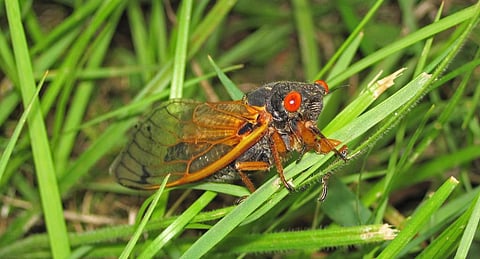Prime numbers, cicadas, online classes: How a lecturer brought them together in IIT-Bombay
The pandemic has left many of us in the teaching profession with a craving to be back in the classroom. The last time I walked into a classroom was in Queensland University of Technology in Brisbane, Australia when I delivered the concluding lecture for my course on data analysis.
Brisbane is a global city that invites students from Asia, Europe, the Americas and Africa with open arms. The university life facilitates valuable cultural intermingling where many can know each other and learn from each other, perhaps with a subtle acknowledgement that knowledge can really come from just about anywhere.
In the process of transiting between that job and my current job in Indian Institute of Technology, Bombay, where I have just started teaching, I have had the good fortune of teaching two courses for first-year masters’ students, freshly out of their undergraduate education. This Indian institute offered me my first experience with online-teaching.
The ‘classroom’ was virtual and the hundred odd first-year students did not get the opportunity to interact with each other and know each other like they would on campus.
In the introductory lecture, therefore, I announced that group assessments, where all members of a given group share the exact same grade, will constitute a major part of the evaluation. I was hoping that that would force them to interact with each other.
I asked them to create their own groups by the end of my first week of teaching. When my students got back to me with their preferred set of group members, I was immediately reminded that ours is a nation with over 20 different states — a hundred students were partitioned into roughly twenty groups of five each. The Punjabis made up one group, the Gujaratis had their own, the Bengalis formed a third group, and so on.
To be fair, in the absence of any information about strangers, it is natural to look for a common ground, something that offers unification of sentiment, or of thought, or of preferences — something that helps people connect easily.
Added to this was the possibility that some students had already known each other from their prior undergraduate institutes. Simply put, more information can facilitate quick decision-making.
All this was in sharp contrast to my previous country of employment. Australia has less than 10 states, and in all my travels within the country, I never felt any significant difference in the ethnic diversity between them.
I strongly believe in the common social good that ethnic diversity can offer and fortunately the cultural diversity of India has great potential to first create, and then contribute to the common good.
My first task as an educator, however, was to realise that a natural tendency to mingle with one’s own kind, needed a natural fix. So, I turned to nature — like I said before, knowledge can indeed come from anywhere!
Two species of cicadas (basically, noisy insects) in the United States are known for their almost perfectly synchronized, periodic mass emergences. These cycles of mass-reproduction are at a uniquely prime-numbered gap — 13 years for one species and 17 for the other.
As it turns out, there is a scientific explanation for these prime-numbered cycles: evolutionary survival-advantage.
To offer an intuition, let us think of a cicada species that has a mass-reproduction cycle of six years (not a prime number). A predator with a cycle of three years would not have enough food (the cicada species) in its first episode of mass-reproduction at the end of three years.
In the second episode however (at the end of six years), there will be a coincidence of mass-reproduction between the predator and the prey, and the predator-numbers will flourish because of greater food-availability, making the mass-extinction of such cicadas more probable.
With prime numbered years, it is easy to see that the chances of this coincidence is significantly reduced – for instance, the first coincidence between our imagined predator and the cicada with a 17-year cycle would happen at the end of the fifty-first year, or after sixteen cycles of mass-reproduction without a corresponding rise in food-availability. Less food for predators means fewer of them will survive.
Consequently then, most of the natural predators that only depended on cicada-based meals would have become extinct by now, thereby ensuring the survival of these periodical cicadas.
That was it! I just needed to think of a strategy to avoid cultural-coincidences in my group-assessment list. While this margin is too narrow to contain a detailed mathematical explanation of my approach, it will suffice to say that I used prime numbers to create five new lists out of the one that my students had originally submitted – one for each group-assessment item.
Each of my lists had twenty unique groups of five people. Remarkably enough, I could also ensure that for any group-assessment, each student was put together with four completely new classmates that s/he had not worked with in any of the previous assessments.
Overall, my first experience at online-teaching turned out to be very fruitful in ways that forced me to create the common social good. Since I wound up my teaching requirements in this institute, I can only hope that my students know each other more.
Views expressed are the author’s own and don’t necessarily reflect those of Down To Earth


